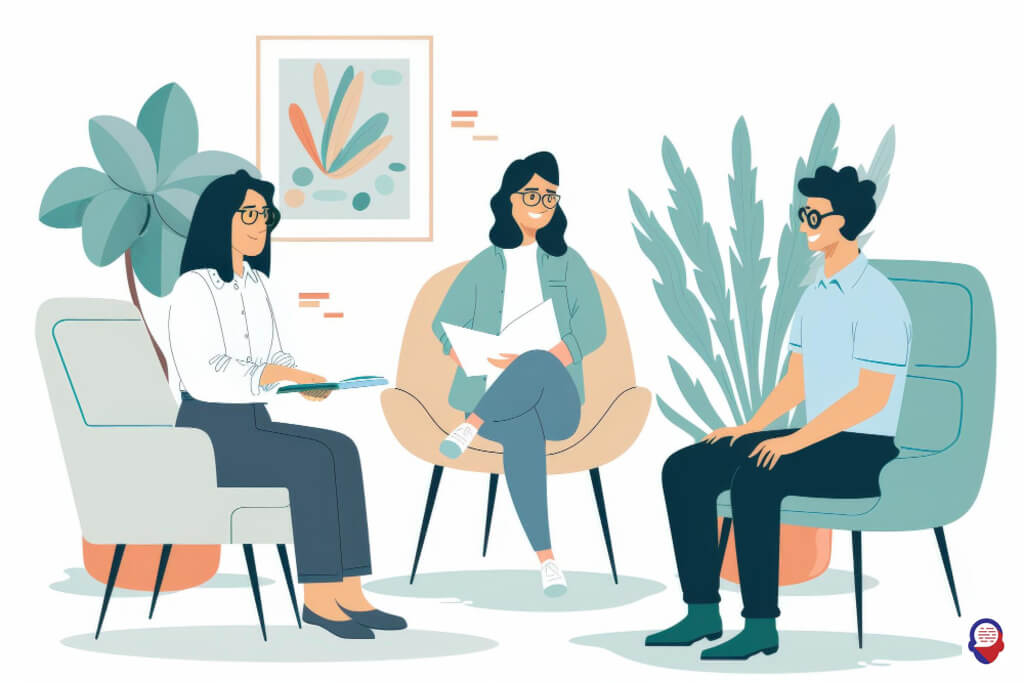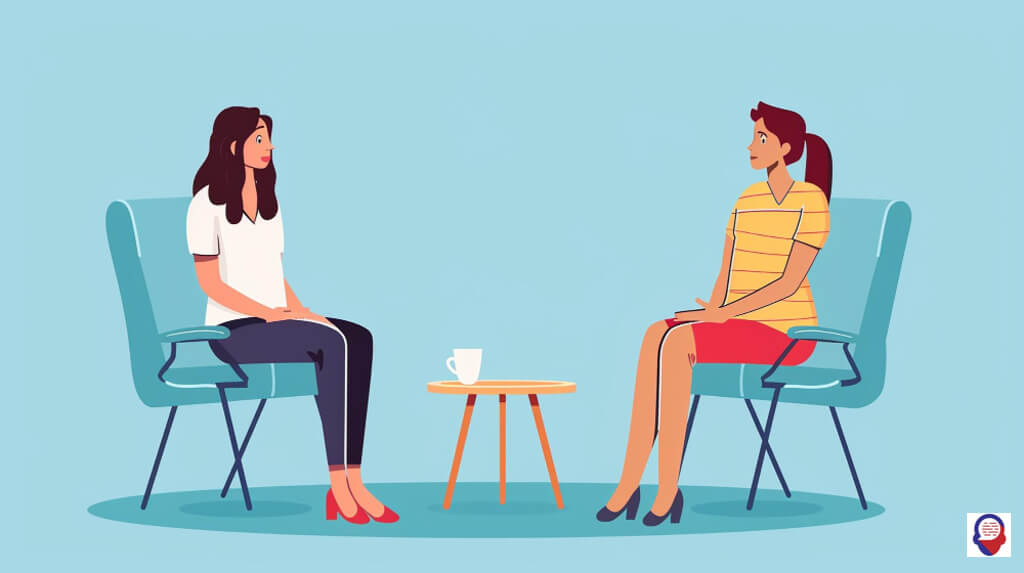Heal Your Relationship with Food: The CBT-E Approach
The struggle with an eating disorder can feel like being trapped in a relentless cycle, a private battle that isolates you from the world, from your loved ones, and even from yourself. It’s a voice that dictates what, when, and how you eat, tying your self-worth to numbers on a scale or the size of your clothes. But what if there was a way to understand that voice, to challenge its power, and to build a new, healthier relationship with food and your body? There is, and it is a highly effective, evidence-based approach called Enhanced Cognitive Behavioural Therapy, or CBT-E.
This therapy isn’t about willpower or simply "eating normally." It’s a structured, compassionate, and collaborative journey designed to untangle the complex web of thoughts, feelings, and behaviours that keep the eating disorder alive. It empowers you with the tools and understanding needed to break free and reclaim your life. This guide will walk you through everything you need to know about this transformative treatment.

What Exactly Is Enhanced Cognitive Behavioural Therapy (CBT-E)?
Enhanced Cognitive Behavioural Therapy is a highly specialized and personalized form of psychotherapy developed specifically to treat the full spectrum of eating disorders in adults and adolescents. It is considered a leading, front-line treatment because of its strong evidence base and its proven effectiveness across different diagnoses.
Unlike general therapy, CBT-E is sharply focused. It operates on the principle that regardless of whether a person has anorexia nervosa, bulimia nervosa, binge eating disorder, or another specified eating disorder, there is a common core psychopathology that maintains the problem. The therapy is "enhanced" because it goes beyond the standard cognitive and behavioural techniques to also address the specific psychological features that are crucial for that individual, such as clinical perfectionism, core low self-esteem, or difficulties with intense emotions.
This approach is transdiagnostic, meaning it’s not a one-size-fits-all model for anorexia and a separate one for bulimia. Instead, it provides a unified framework that can be precisely tailored to the unique person sitting in the room. The goal is to create a personalized map of your eating disorder and then, together with your therapist, systematically dismantle it piece by piece.

How Does CBT-E Work?
CBT-E works by helping you and your therapist collaboratively build a deep understanding of the specific psychological mechanisms that are keeping your eating disorder active in the here and now. The therapy focuses on changing the behaviours and the thinking patterns that form the vicious cycle of the disorder, empowering you to establish and maintain healthy habits for the long term.
It is an active, not a passive, therapy. You are not just talking about your problems, you are actively working to solve them. Through techniques like real-time self-monitoring, behavioural experiments, and cognitive restructuring, you learn to identify your personal triggers, challenge unhelpful beliefs about food and weight, and develop more effective ways of coping with life’s challenges. The process is structured, goal-oriented, and intensely focused on creating tangible, lasting change.

What Are the Core Principles of CBT-E?
The entire process of CBT-E is built upon a foundation of core principles that make it a powerful and effective treatment. These principles guide every session and every intervention, ensuring the therapy remains focused, collaborative, and tailored to you.
One of the most important principles is that the therapy is intensely collaborative. You and your therapist are a team, working together to understand and overcome the eating disorder. You are considered the expert on your own experience, and the therapist is the expert on the treatment model.
CBT-E is also firmly rooted in the present. While your past experiences are acknowledged as important in shaping who you are, the therapy’s primary focus is on the factors that are keeping the problem going right now. By changing these current maintaining mechanisms, you can create a different future.
Finally, the therapy is highly individualized. It begins with creating a personalized "formulation," which is a visual map or diagram that shows how different thoughts, feelings, and behaviours are connected to maintain your specific eating disorder. This formulation becomes the blueprint for your unique treatment plan.

What Happens in a Typical CBT-E Session?
A typical CBT-E session is structured and goal-directed, designed to make the most of the time you have with your therapist. It is an active, working session where you and your therapist roll up your sleeves to tackle the eating disorder head-on.
Each session usually begins with a brief check-in, which includes in-session weighing. This is done not to focus on weight itself, but to demystify the number, track progress towards weight restoration if necessary, and use the data to inform the therapy. You and your therapist will then review your self-monitoring records from the previous week, looking for patterns, successes, and challenges.
Following the review, you will collaboratively set an agenda for the main part of the session. This ensures that the time is spent addressing the most important issues for you at that moment. The bulk of the session involves working on these agenda items, using specific CBT-E techniques to address things like dietary rules, body checking, or binge eating. The session concludes with a summary of what was accomplished and the joint setting of tasks, or "homework," to be completed before the next meeting.

What Are the Four Stages of CBT-E?
CBT-E is a structured therapy that unfolds over four clear and distinct stages, each with its own specific objectives and interventions. This structured approach provides a clear roadmap for recovery, helping you see your progress and understand what to expect next.
The progression through these stages is logical and methodical. It starts with building a strong foundation and then moves on to addressing the core features of the eating disorder, before finally focusing on ensuring the changes you have made are sustainable for the future. This stage-by-stage process ensures that no stone is left unturned in your journey toward recovery.

What Is Stage One?
Stage One is all about "Starting Well" and typically lasts for about four weeks, with sessions often held twice a week. The primary goals are to engage you in the treatment, build a shared understanding of your eating disorder, and begin to make immediate behavioural changes, particularly establishing a pattern of regular eating.
During this stage, your therapist will work with you to create your personalized formulation, the map of your eating disorder. You will also be introduced to the cornerstone of CBT-E, real-time self-monitoring, where you record your food, thoughts, and behaviours as they happen. This stage is crucial for building momentum and motivation, as you begin to see that change is possible. The focus on regular eating helps to stabilize your body’s physiological responses and reduce the chaotic patterns that fuel the disorder.

What Is Stage Two?
Stage Two is a brief, transitional phase known as "Taking Stock," which typically lasts for one or two sessions. This stage serves as a bridge between the initial phase of treatment and the main body of the therapy.
The main purpose of Stage Two is to systematically review the progress you have made so far. You and your therapist will look back at your initial formulation, your self-monitoring records, and the changes you’ve implemented. Together, you will identify what has worked well, what obstacles remain, and refine the plan for the next, more intensive stage of treatment. It’s a crucial moment for reflection and forward planning, ensuring that the therapy remains perfectly tailored to your evolving needs.

What Is Stage Three?
Stage Three is the heart of the treatment and is the longest phase, typically lasting for about eight to ten weeks with weekly sessions. This is where you and your therapist do the deep work of addressing the core mechanisms that are maintaining your eating disorder.
The work in this stage is guided by your personal formulation and focuses on the key issues identified in Stage Two. The sessions will systematically address modules related to your specific challenges. This might include tackling concerns about shape and weight, challenging restrictive dietary rules, developing skills for managing difficult moods without using eating disorder behaviours, and addressing any underlying perfectionism or low self-esteem that fuels the problem. This stage uses a variety of cognitive and behavioural experiments to help you test your beliefs and build new, more helpful ways of thinking and behaving.

What Is Stage Four?
Stage Four, "Ending Well," is the final phase of treatment and focuses on ensuring that the progress you have made is lasting. This stage typically spans the last three to five sessions, which may be spaced further apart, for example, every two weeks.
The primary goal of this stage is to minimize the risk of relapse. You and your therapist will look ahead to the future, anticipating potential challenges and high-risk situations. You will develop a detailed and practical plan for how to manage these situations effectively when they arise after therapy has ended. This involves identifying personal warning signs that the eating disorder might be returning and creating a clear blueprint for what to do if those signs appear. The aim is to leave you feeling confident, prepared, and fully equipped to maintain your recovery independently.

Who Can Benefit from CBT-E?
CBT-E is designed to be a flexible and effective treatment for a wide range of individuals struggling with disordered eating. It is suitable for adults and older adolescents who are dealing with any of the main eating disorder diagnoses.
This includes individuals with anorexia nervosa, bulimia nervosa, binge eating disorder, and other specified feeding or eating disorders (OSFED). Because of its transdiagnostic nature, it can be adapted for people who may not fit neatly into one diagnostic box but who are clearly struggling with a clinically significant eating problem. It is particularly effective for those who feel "stuck" in their patterns and are motivated to engage in an active, collaborative, and present-focused therapy.
The therapy is most appropriate for individuals who are medically stable. If someone is severely underweight or has significant medical complications, a period of medical stabilization or a higher level of care may be required before they can fully engage in outpatient CBT-E.

How Is CBT-E Different from Other Therapies?
CBT-E stands out from other therapeutic approaches due to its highly specific focus, its structured nature, and its emphasis on the "here and now" mechanisms that maintain the eating disorder. While many therapies can be helpful, CBT-E is uniquely engineered to target the core engine of the problem.
Its primary distinction is its transdiagnostic formulation, which posits that a similar core psychopathology, primarily the over-evaluation of shape and weight, underlies all eating disorders. This allows the therapist to use a single, coherent theory to treat a variety of presentations. Unlike more exploratory therapies, CBT-E is goal-oriented and time-limited, with a clear beginning, middle, and end, which can be very empowering for clients.

How Does It Compare to Standard CBT?
CBT-E evolved from standard Cognitive Behavioural Therapy, but it is "Enhanced" in several crucial ways that make it more effective for eating disorders. While standard CBT primarily focuses on the interplay of thoughts, feelings, and behaviours, CBT-E broadens this scope significantly.
The "enhancements" are specific modules designed to address the particular psychological features that often maintain an eating disorder but may not be the central focus of standard CBT. These include clinical perfectionism, core low self-esteem, mood intolerance (the inability to cope with strong emotions), and interpersonal difficulties. The treatment is tailored to address only the modules relevant to the individual, making it a highly personalized and efficient therapy.

How Does It Compare to Psychodynamic Therapy?
CBT-E and psychodynamic therapy represent two very different approaches to psychological healing. The most significant difference lies in their primary focus. CBT-E is a present-focused therapy, concentrating on the current thoughts and behaviours that are keeping the eating disorder going.
In contrast, psychodynamic therapy is historically focused. It delves into a person’s past, particularly early life experiences and relationships, to uncover the unconscious conflicts and developmental issues that are believed to be the root cause of their current distress. While CBT-E is structured, directive, and skills-based, psychodynamic therapy is typically more open-ended and exploratory, aiming for insight into deep-seated emotional patterns. Both can be valuable, but CBT-E’s direct attack on the maintaining mechanisms often leads to faster symptom reduction for eating disorders.

What Is the Role of Self-Monitoring in CBT-E?
Self-monitoring is the absolute cornerstone of CBT-E, acting as the primary tool for change and understanding from the very first session to the last. It involves recording, in real time, detailed information about your eating, associated behaviours (like purging or exercise), thoughts, and feelings.
This practice is not about judgment or creating a food diary for scrutiny, it’s about becoming a detective of your own experience. By monitoring in the moment, you and your therapist can gain a precise, objective picture of how the eating disorder operates day to day. It helps you see the immediate links between a situation, a thought, and a subsequent behaviour, breaking down the automatic and seemingly uncontrollable nature of the disorder.
Self-monitoring illuminates the patterns that were previously invisible. It reveals triggers for bingeing or restriction, highlights the function of certain "dietary rules," and provides concrete data to challenge unhelpful thoughts. It is the engine of the therapy, providing the raw material for every session and empowering you to make conscious, informed choices rather than being driven by the disorder.

Is CBT-E Effective?
Yes, CBT-E is widely recognized by researchers and clinicians as one of the most effective psychological treatments available for eating disorders. Its effectiveness is not just anecdotal, it is backed by a substantial body of high-quality scientific evidence from numerous randomized controlled trials, the gold standard in medical research.
Studies have consistently shown that a significant majority of clients who complete a course of CBT-E experience a substantial and lasting reduction in their eating disorder symptoms. For adults with bulimia nervosa and binge eating disorder, it is considered the treatment of choice. Research has also demonstrated its effectiveness for anorexia nervosa and other eating disorders, making it a robust and reliable intervention.
Of course, no therapy is 100% effective for everyone. The success of CBT-E depends on several factors, including a strong therapeutic alliance with your therapist and your own commitment to actively engaging in the process, especially the self-monitoring and out-of-session tasks. However, for those who are ready to do the work, CBT-E offers a very real and evidence-based path to recovery.
Frequently Asked Questions

How long does CBT-E treatment usually last?
The duration of CBT-E is tailored to the individual’s needs, but it follows a general structure. For most people with bulimia nervosa or binge eating disorder, the standard protocol is 20 sessions over approximately 20 weeks. For individuals who are underweight, the treatment is longer, typically around 40 sessions over 40 weeks, to allow for the process of weight restoration alongside the psychological work.

Do I have to be a certain weight to start CBT-E?
No, you do not have to be a specific weight to begin CBT-E, as it is designed for the full spectrum of eating disorders. However, your medical safety is the top priority. If an individual is severely underweight and medically unstable, their GP or a specialist may recommend a period of medical stabilization or a higher level of care, like an inpatient or day patient program, before they can safely and effectively engage in outpatient CBT-E.

Will I have to talk about my childhood?
Generally, no. CBT-E is a "here and now" therapy that focuses on what is keeping the eating disorder going in your present life. The primary goal is to change current patterns of thinking and behaviour. That said, if a past event, such as a childhood trauma, is actively and directly impacting your ability to make progress in the present, your therapist may dedicate some time to addressing it, but it is not the central focus of the treatment.

Can CBT-E be delivered online?
Yes, CBT-E has been adapted successfully for online and telehealth delivery. Research has shown that guided self-help versions of CBT-E, where you work through materials with the support of a therapist, and therapy delivered via video conferencing can be just as effective as face-to-face treatment for many individuals. This has made the therapy more accessible to people who may live in remote areas or have difficulty attending in-person appointments.

Final Thoughts: Your Path Forward
Recovering from an eating disorder is a journey of courage, and choosing the right path is a critical first step. CBT-E offers a clear, evidence-based, and compassionate roadmap. It is a therapy that respects you as an individual, empowers you with practical skills, and works collaboratively with you to build a life where you, not the eating disorder, are in control. It is a journey from isolation to connection, from restriction to freedom, and from self-criticism to self-compassion.
Taking that first step can be the hardest part. It requires acknowledging the struggle and reaching out for support. But it is also the most powerful step you can take towards a future where your relationship with food is one of nourishment and pleasure, and your sense of self-worth is built on a foundation far stronger than shape or weight. You deserve to live a full and vibrant life, free from the constraints of an eating disorder.
At Counselling-uk, we understand that life presents challenges that can feel overwhelming. We are here to provide a safe, confidential, and professional space for you to find the help and advice you need. If you are struggling, know that you are not alone. Our dedicated therapists are here to support you on your journey to wellness. Take the first step today, reach out and let us help you navigate the path to recovery.



